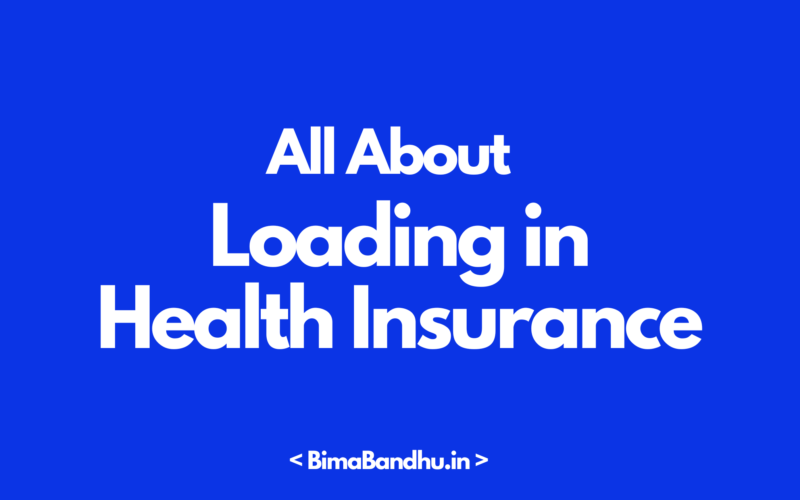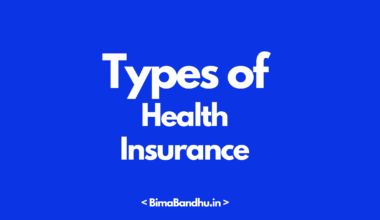Understanding your health insurance bill can often be like opening a Pandora’s box, especially when faced with increased renewal premiums. While rising costs may seem daunting, the importance of having coverage cannot be overstated. In the face of unexpected medical emergencies, a robust health insurance policy acts as a safety net, providing reassurance and financial protection for both individuals and families.
However, dealing with premium hikes can be challenging, particularly when terms like ‘Loading’ come into play. For those unfamiliar with health insurance jargon, deciphering these nuances may feel like wandering through a maze without a map.
In this guide, we aim to cover the concept of ‘loading’ in health insurance policy. By understanding its implications, you’ll gain valuable insights into the factors influencing your insurance costs.
What is Loading in Health Insurance Policy?
Opening your health insurance bill to find a surge in renewal premiums can be a disconcerting experience. While the reality of escalating costs is undeniable, the need for health insurance remains unaltered. Amidst the necessity for coverage, you also need to understand the nuances behind premium hikes.
Loading, in essence, refers to the additional amount incorporated into your premium to adjust for perceived risk factors associated with insuring an individual. This adjustment is based on various factors, including age, medical history, lifestyle choices, and pre-existing conditions. While the concept may seem straightforward, its implications are far-reaching, significantly influencing the financial dynamics of your insurance coverage.
Understanding loading is paramount for every policyholder as it serves as a compass, guiding individuals through insurance costs and aiding in making informed decisions regarding coverage. Policyholders can proactively assess their insurance needs by comprehending the factors contributing to loading, ensuring adequate coverage without bearing the burden of exorbitant premiums.
In essence, loading epitomises the intersection of risk assessment and financial viability within health insurance. The awareness of loading empowers individuals to advocate for fair and transparent pricing practices within the insurance industry. Armed with knowledge, policyholders can engage in informed discussions with insurers, seeking clarity on the rationale behind premium adjustments.
Recommended Read: Group Health Insurance: Advantages, Features, and More
Factors That Affect Loading in Health Insurance
Various factors influence health insurance premiums. Insurance companies carefully assess risk profiles, with certain key components significantly affecting loading applied to premiums. Knowing these factors can provide valuable insights into insurance costs, especially for individuals considered high-risk. These include:
- Pre-Existing Conditions
People with pre-existing conditions face higher health risks, leading to more medical interventions and treatment expenses. Insurers may mitigate this risk by applying loading to premiums. The extent of loading depends on the condition’s severity, policy type, and coverage duration.
- Age
As people age, the likelihood of medical issues and healthcare costs increases. Insurers adjust premium rates through loading to reflect this higher risk associated with ageing. Age-related loading ensures adequate coverage for older policyholders’ evolving healthcare needs.
- Smoking
Tobacco use raises health risks, resulting in higher loading for smokers. Insurers impose higher premiums on smokers due to the increased likelihood of critical illnesses and healthcare claims.
- Health Status
An individual’s health plays a significant role in determining premiums. Insurers assess medical histories to gauge potential risks. For instance, healthy individuals typically have lower premiums, while those with underlying health conditions face higher loading to accommodate elevated risk profiles.
- Other Factors
Additional factors such as obesity, geographic location, and occupational hazards, also contribute to risk assessment, prompting insurers to adjust premiums accordingly. These factors highlight the complexity of insurance pricing.
Understanding the intricacies of loading in health insurance can enable individuals to navigate health insurance premiums with clarity and foresight.
Is Loading in Health Insurance Justified?
The concept of loading in insurance prompts scrutiny into its justification amidst its perceived advantages and disadvantages. While loading serves as a mechanism for mitigating risk and ensuring financial viability for insurers, its imposition raises questions regarding fairness and equity in premium determination.
Insurance providers often institute age limits, typically between 65 and 80 years, as a means of mitigating risk associated with advancing age. However, this arbitrary threshold poses challenges in accurately assessing risk profiles for individuals within this demographic cohort, potentially resulting in inflated premiums. Furthermore, loading predicated on pre-existing conditions or habits such as smoking may exacerbate financial burdens for policyholders already grappling with health challenges.
At its core, the rationale behind loading is two-fold: to safeguard insurers against losses stemming from high-risk customers and to afford policyholders access to vital coverage options. While loading in health insurance seeks to strike a delicate balance between risk and reward, its application warrants critical examination to ensure fairness and transparency in premium determination.
However, the justification for loading becomes essential when insurers factor in past medical histories characterised by treatable conditions such as hernia or cataract surgeries. In such instances, loading may be perceived as unjustified, disproportionately burdening policyholders with inflated premiums despite reduced likelihood of future complications.
In essence, striking a balance between risk mitigation and fairness in premium determination is paramount to ensuring equitable access to comprehensive coverage for all individuals.
Also Read: All About Waiting Period in Health Insurance
Understanding Insurance Exclusions and Loading
While loading in health insurance adjusts premiums based on individual risk profiles, insurance policies also include exclusions, representing specific scenarios or conditions for which coverage is withheld. You should also know that:
- Exclusions outline circumstances or conditions ineligible for insurance claims despite premium payment. Understanding these boundaries is crucial for policyholders, highlighting the importance of aligning expectations with policy provisions.
- Exclusions can take various forms, including pre-existing illnesses, specific treatments, or lifestyle choices like hazardous activities or substance abuse. Policies may exclude coverage for these scenarios to manage risk.
- Understanding exclusions can empower individuals to make informed decisions about coverage adequacy and potential gaps in protection.
FAQs
Do health insurance premiums stay the same every year or increase?
Health insurance premiums can fluctuate from year to year based on various factors. While insurers strive to maintain stability in premium rates, factors such as age, medical history, and claim frequency can influence renewal premiums. Additionally, insurers may apply claim loading in case of multiple claim filing, resulting in an increase in premium rates for policyholders deemed high-risk.
Do insurers consider loading premiums while renewing health insurance?
Yes, insurance companies may consider loading premiums during policy renewal if they perceive the policyholder as a risky customer. His claim history, medical conditions, or advancing age can prompt insurers to adjust premiums through loading mechanisms. This is why it’s essential for policyholders to maintain a favourable risk profile and adhere to policy terms to mitigate the likelihood of premium loading during renewal.
Is there any difference between loading and riders in insurance policies?
Loading in insurance refers to the additional amount incorporated into the premium to adjust for perceived risk factors associated with the policyholder, such as pre-existing conditions or lifestyle choices. On the other hand, riders are optional add-ons that provide additional coverage for specific risks or conditions beyond what is included in the base policy. While loading affects the overall premium amount, riders entail paying an extra premium to enhance coverage for specific contingencies, such as critical illnesses or disability. Both loading and riders serve to tailor insurance coverage to individual needs, albeit through different mechanisms.
Read BimaBandhu’s Insurance Guides






